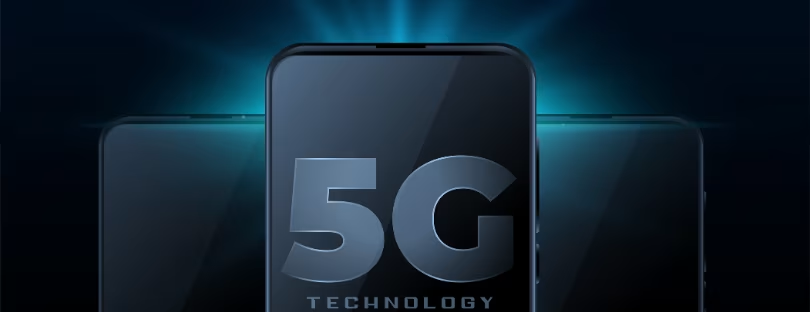
5G Devices: What’s the Big Deal and Should You Care?
Let’s talk 5G. Not the “5G will melt your brain” nonsense, but the real, everyday stuff—like what it actually means for your phone, your data speeds, and whether you really need a 5G device right now.
We’ve all seen the commercials: blazing-fast downloads, lag-free streaming, even smart toasters (okay, maybe not that last one… yet). But with 5G devices popping up everywhere—from flagship smartphones to tablets, laptops, and even watches—it’s time to break it all down. No jargon. No marketing fluff. Just the stuff that matters.
So, what is a 5G device anyway?
At its core, a 5G device is any gadget that can connect to a 5G network. Think of 5G as the next-gen version of 4G LTE. It’s designed to be faster, more responsive, and able to handle a ton more devices at once. But here’s the thing: not every phone or device can use 5G. You need a device with a 5G modem inside it.
Manufacturers started releasing 5G phones around 2019, and now, in 2025, most mid-range and premium phones come with 5G as standard. We’re even seeing entry-level phones hopping on the 5G train. Laptops with 5G? Yep. Tablets? Check. Heck, some cars now come with built-in 5G modems.
But do you really need a 5G phone?
This is the big question, and honestly, the answer depends on how you use your phone—and where you live.
If you’re constantly on the go, streaming high-def videos, gaming in real time, or uploading giant files from random cafes, 5G can be a game-changer if your local network actually supports it well.
But if you’re mostly on Wi-Fi at home or the office, you might not notice a massive difference. In many cities, 4G is still doing a solid job—and unless you’re using very data-hungry apps or services, you won’t feel like you’re missing out much.
That said, 5G is the future. Networks are expanding fast, and support for 4G will eventually taper off (though not for a while). So if you’re buying a new phone today, it makes sense to go 5G—it’s more about future-proofing than instant magic.
Types of 5G: Because, of course, there’s more than one
Let’s keep this simple: not all 5G is created equal.
There are basically three “flavors”:
- Low-band 5G – It’s fast, but not crazy fast. Think of it as slightly better 4G. Great coverage, great battery life.
- Mid-band 5G – This is the sweet spot for speed and coverage. Most countries are rolling this out aggressively.
- High-band (mmWave) – Super fast, but only works if you’re standing right next to a tower. Great in stadiums and airports, not so great indoors or rural areas.
Most 5G devices today support a mix of low- and mid-band. Only some premium devices (and U.S. models in particular) support the ultra-fast mmWave. But unless you live in a mmWave hotspot (and use your phone there a lot), it’s not something to stress over.
What are the best 5G devices right now?
This changes every few months, but let’s look at a few categories:
Smartphones
If you want the best of the best:
- Samsung Galaxy S24 Ultra
- iPhone 15 Pro / Pro Max
- Google Pixel 8 Pro
These all have excellent 5G support, including mmWave in certain regions.
If you want a solid mid-ranger:
- Samsung Galaxy A55 5G
- OnePlus Nord CE 3 5G
- Nothing Phone (2)
These offer great performance at a lower price point and support most 5G bands you’ll need.
Budget-friendly?
- Motorola Moto G 5G
- Xiaomi Redmi Note 13 5G
These won’t blow you away, but they’ll get you online with 5G for under €300.
Tablets and Laptops
More tablets now come with optional 5G models—especially useful for frequent travelers and remote workers.
- iPad Pro (5G version)
- Samsung Galaxy Tab S9 5G
- Lenovo ThinkPad X1 Carbon (with 5G)
Great for working from anywhere, but not cheap. Worth it if you value mobile connectivity beyond Wi-Fi hotspots.
Wearables and other devices
Yep, even smartwatches like the Apple Watch Series 9 Cellular or Samsung Galaxy Watch6 can tap into 5G—though LTE is more common right now due to battery constraints.
There’s also growing interest in 5G-enabled home routers, perfect for areas with poor fiber coverage. Plug and play, and boom—your whole house is on 5G.
What’s it like using a 5G device day to day?
Let’s be real: 5G doesn’t feel like teleportation. There’s no magical light show. Most of the time, you’ll just notice your downloads are quicker, videos buffer less, and FaceTime or WhatsApp calls drop less often in busy areas.
The biggest differences shine through when:
- You’re in a packed area (like a concert or airport)
- You’re using cloud gaming or streaming 4K videos
- You’re relying on your mobile data for work—tethering your laptop, uploading content, etc.
Also, 5G is improving constantly. Where you live makes a huge difference. In some cities, 5G is fantastic. In others? Still catching up.
Downsides of 5G devices?
They’re mostly gone now, but there are a few things to note:
- Battery drain: Earlier 5G chips were energy hogs, but today’s models are way better. Still, using mmWave drains battery fast.
- Coverage issues: If you’re in a rural area, your 5G phone may not find a 5G tower to connect to. Thankfully, it will switch to 4G automatically.
- Price: Some devices are pricier just because they have 5G, but this is changing quickly as 5G becomes standard.
Should you upgrade?
If your current phone is older than three years, or doesn’t support 5G, and you travel a lot, stream a lot, or just want something more future-proof—yes, it’s probably time to upgrade.
But if your 4G phone is doing just fine, and you’re not seeing 5G coverage in your area, you’re not missing out on anything yet.
Also, good news: you don’t need to rush. Most new devices support both 4G and 5G. So you’re covered either way.
Final thoughts
5G isn’t hype anymore—it’s here, it’s real, and it’s getting better every day. But like any tech upgrade, it only matters if it actually makes your life easier.
If you’re in the market for a new phone or tablet, go with a 5G model. They’re the new standard. But don’t feel pressured to upgrade just because someone says “5G is the future.” Wait until it makes sense for you—whether that’s because you want faster speeds or just a new gadget that’ll last a few years.











